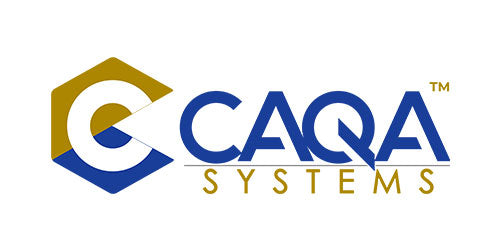Bridging Skills Gaps Through Local Connections
Australia's Vocational Education and Training (VET) sector stands at a critical crossroads, playing a pivotal role in shaping the nation's workforce. Each year, over 5.1 million students turn to VET to gain practical, job-ready skills, a figure that reflects a significant increase of nearly 11% from the previous year. These students pursue their education through a variety of pathways, including Technical and Further Education (TAFE) institutes, private Registered Training Organisations (RTOs), and apprenticeships, which offer hands-on experience alongside theoretical knowledge. The growing demand for VET programs highlights their importance in addressing skill shortages across industries, supporting economic growth, and preparing Australians for the ever-evolving demands of the modern workforce. As the backbone of workforce development, the VET sector continues to adapt and innovate to meet the needs of individuals and businesses alike. From plumbers maintaining urban infrastructure to veterinary nurses caring for our beloved animals, VET graduates fuel industries that collectively contribute billions to Australia's economy. In a landscape where skill shortages exceeded 444,000 vacancies in 2022, according to the Australian Bureau of Statistics, furthermore, the 2023 Skills Priority List showed that 36% of occupations (332 out of 916) were in national shortage, an increase of about five percentage points from 2022, one element has emerged as the defining factor in VET's continued relevance and impact: community engagement.
The concept of community engagement in VET transcends simple goodwill initiatives—it represents a strategic imperative that aligns training outcomes with regional demands, enhances student success rates, and strengthens societal resilience. In an era where technology, demographic shifts, and local economic needs are rapidly evolving, the question isn't whether community engagement matters, but rather how it can fundamentally redefine the role and effectiveness of the entire VET sector.
Defining Community Engagement in the VET Context
At its core, community engagement in Vocational Education and Training (VET) involves creating meaningful partnerships with a wide range of local stakeholders—residents, businesses, councils, schools, and cultural groups—to shape training programs that authentically reflect a region's unique needs and inherent strengths. This approach ensures that training is grounded in the reality of local industries and communities, making it both relevant and impactful.
This concept comes to life in numerous practical applications. For instance, a TAFE in rural Victoria might tailor a Certificate III in Agriculture to address specific local farming practices, such as viticulture in wine regions or livestock management in dairy-heavy areas. Meanwhile, an urban RTO in Sydney might collaborate closely with bustling hospitality hubs to create specialised barista training programs designed to meet the high demand for skilled café staff. Similarly, providers in coastal towns might focus on training programs in marine tourism or fishing industries, while those in mining regions could develop courses in heavy machinery operation or resource management.
In essence, “community engagement” within the VET sector signifies a proactive and forward-thinking approach that extends far beyond traditional classroom settings. Instead of offering generic training programs that may not meet local demands, this form of engagement ensures that training is tailored and specific. Picture a town in need of more builders, aged care workers, or chefs; VET steps in to provide the necessary training to fill these crucial gaps. However, effective community engagement means that VET providers, such as TAFE and other private training organisations, actively immerse themselves within their local environment. This involves communicating directly with local businesses to pinpoint the exact skills they require, working closely with community groups to understand the broader training needs and aspirations of local residents, and then designing courses that align with these demands.
Moreover, effective community engagement goes beyond just delivering the right training—it also ensures that students are supported throughout their learning journey. This could include career counselling, mentorship programs, and opportunities to connect with local employers through placements, internships, or networking events. By building these connections, VET providers help bridge the gap between training and employment, ensuring that students can seamlessly transition into meaningful jobs within their community.
The importance of this engagement cannot be overstated. Not only does it lead to improved employment outcomes by aligning training with actual job opportunities, but it also has far-reaching benefits for local businesses, who gain access to a skilled workforce tailored to their specific needs. This, in turn, strengthens the broader community by fostering a robust local economy through increased employment rates and enhanced productivity. As training becomes more relevant and accessible, students are more likely to succeed, leading to higher completion rates and better long-term career prospects.
Ultimately, community engagement is about creating a virtuous cycle where training providers, local businesses, and residents all benefit. By ensuring that VET programs are deeply rooted in the needs of their communities, providers can play a pivotal role in driving economic growth, improving social cohesion, and nurturing vibrant, self-sustaining regions. This approach not only ensures that training remains relevant and impactful but also secures better outcomes for everyone involved—students, employers, and the community as a whole.
The National Centre for Vocational Education Research (NCVER) reported that in 2023, more than 1.26 million VET students participated in some form of community-linked training, often through apprenticeships or workplace placements. Unlike broader university systems that often operate at national or international scales, VET's inherently localised focus makes it naturally suited for deeper community connections, ensuring that skills development directly serves the places where students live and work. This connection transforms VET institutions from mere educational pipelines into genuine community assets with lasting impact.
The Geographical Imperative: Meeting Diverse Regional Needs
The urgency of community engagement in Australian VET stems directly from our nation's remarkably diverse geography and economic landscape. Urban centres like Melbourne have technology and service sector jobs, while rural towns like Broken Hill rely heavily on agriculture and traditional trades, requiring VET to demonstrate exceptional adaptability to match these varying contexts.
Australia's workforce landscape is undergoing significant changes across various sectors, driven by technological advancements, demographic shifts, and the transition to clean energy. The tech sector is a key focus, with a shared goal between the Tech Council of Australia and the Australian Government to achieve 1.2 million tech jobs by 2030. As of February 2023, the workforce stood at 935,000 workers, representing 78% of the target. To bridge the gap, 160,000 workers are expected to come from entry-level pathways like universities and vocational education and training (VET), while 300,000 workers will be retrained for tech roles. Additionally, 150,000 skilled migrants will be needed for specialised positions. Tech-intensive roles are increasingly integrated into industries such as retail, banking, professional services, government, and mining.
The clean energy sector is another critical area of growth, projected to create 450,000 new jobs by 2030, accounting for one-third of all job growth in Australia. This includes an urgent need for 32,000 electricians to meet renewable energy targets and support infrastructure development. Skilled migration remains vital for engineering roles, with over half of electrical engineers currently born overseas. States like Queensland play a central role in renewable energy projects, while training reforms aim to diversify participation by including women, First Nations peoples, and migrants in STEM-related fields.
The care economy, encompassing aged care and healthcare services, is set to expand by 22% by 2033, driven by Australia's ageing population. However, acute shortages persist in areas like Tasmania’s aged care workforce. Addressing these challenges requires tailored training programs and migration pathways to ensure adequate staffing levels.
In the energy sector, Australia’s net-zero transition demands an additional 85,000 workers by 2030 to support renewable energy infrastructure construction and maintenance. Electricians are in particularly high demand, with the labour supply projected to fall short without increased VET completions. The Northern Territory is focusing on growing its workforce from 135,000 to 166,000 by 2030 to support its ambitious $40 billion economic target.
Regional Australia plays a vital role in the nation’s economy through industries like agriculture, mining, forestry, and tourism. However, workforce shortages persist in Outback communities—for example, veterinary services—and economic diversification efforts are supported through initiatives such as the $220 million Regional Jobs and Investment Packages. State-specific highlights include the Northern Territory’s focus on economic expansion, Queensland’s demand for renewable energy specialists, Tasmania’s critical shortages in aged care workers, and Victoria and New South Wales’ emphasis on clean energy workforce development alongside urban tech job growth.
Across all industries, future workforce needs will be shaped by technology transformation and the green transition. By 2030, more than one in five jobs will fundamentally change due to these factors. Reskilling initiatives are essential to address skill gaps across sectors. Skilled migration will play a key role in addressing shortages in engineering and healthcare roles. Collaboration between vocational education (TAFE) and universities is vital for creating pathways into high-demand industries such as STEM and clean energy.
Australia’s ability to meet these ambitious goals depends on coordinated efforts between federal agencies, state governments, industry stakeholders, and educational institutions. Tailored solutions addressing regional needs will ensure equitable growth across states and territories while supporting national priorities like net-zero emissions and technological innovation.
Impact on Student Outcomes and Retention
The VET sector serves an exceptionally broad cohort—school leavers seeking initial qualifications, mid-career professionals changing directions, and international students investing substantially in Australian education. With costs ranging from $2,000 for a Certificate III to $15,000 for a Diploma for international students, these learners rightfully seek relevance—a trade that fits their community context and a qualification that leads to sustainable employment.
Community-linked training significantly enhances these outcomes by connecting learners with local industries and tailored opportunities. While specific figures on improved completion rates or faster employment outcomes from community-linked programs are not available, NCVER data shows that 82.7% of VET graduates were employed after completing their qualifications in 2022, demonstrating the sector's strong employment outcomes. Additionally, completion rates for VET qualifications remain low at 47.3%, highlighting the need for more engaging and locally relevant training programs to address dropout risks.
The importance of community-linked training is readily observable: a veterinary nursing student in a rural shire, training directly with local clinics, remains highly motivated by seeing her developing skills heal nearby pets; similarly, an urban carpenter apprentice building community housing directly witnesses the tangible impact of his craftsmanship. Conversely, disconnected training increases dropout risks, wasting individual potential and widening critical skill gaps at precisely the moment Australia can least afford such losses. Addressing these challenges requires collaborative efforts between governments, industry stakeholders, and educational providers to ensure VET programs align closely with local needs and conditions.
Case Study: Veterinary Services and Community-Aligned Training
The veterinary sector provides a compelling illustration of the importance of community engagement in vocational education and training. Australia's animal care industry—serving 69% of households with pets while simultaneously supporting livestock essential to rural economies—relies heavily on graduates with qualifications such as the Certificate IV in Veterinary Nursing. These graduates form the backbone of a sector that is critical to both urban and rural communities, yet the skills required differ significantly based on location.
In urban areas, veterinary clinics increasingly demand competencies in emerging areas like telehealth services, reflecting advancements in technology and changing client expectations. Conversely, rural practices require expertise in livestock management, such as cattle drenching, pregnancy testing, and herd health planning, to support agricultural productivity. Community engagement ensures that training programs are tailored to these diverse needs. The Australian Veterinary Association (AVA) has repeatedly highlighted that regional shortages of veterinary professionals are most acute where training programs fail to address local conditions and industry-specific demands.
Training organisations that actively collaborate with local stakeholders can bridge this gap effectively. For example, partnering with veterinary clinics in rural areas like Tamworth enables students to gain hands-on experience in livestock care, preparing them for the unique challenges of regional practice. Similarly, collaboration with animal shelters or urban clinics in cities like Perth allows students to specialise in companion animal care, including advanced surgical assistance and behavioral support for pets. These targeted approaches not only enhance the relevance of training but also improve graduate employability by aligning skills development with real-world demands.
The benefits of community-linked training extend beyond individual learners to the broader industry and society. Graduates who are equipped with locally relevant skills contribute directly to improving animal welfare, supporting public health, and strengthening regional economies. In rural areas, where access to veterinary services is often limited, well-trained professionals can reduce livestock losses and enhance agricultural productivity, which is vital for food security. In urban settings, skilled veterinary nurses can improve client satisfaction and expand clinic capacities through telehealth services or specialised companion animal care.
Without these targeted, community-driven approaches, graduates risk being ill-prepared for the specific needs of their practice environments, applying urban-centric skills in rural contexts or vice versa. This misalignment creates strain on animal welfare systems, exacerbates workforce shortages, and hampers industry growth. By embedding community engagement into their programs, training organisations not only address these challenges but also foster stronger connections between education providers, local industries, and communities. This approach ensures that vocational education remains a dynamic and responsive force for economic and social development across Australia.
Building Community Resilience Through Targeted Training
Vocational education and training (VET) programs with strong community engagement provide significant benefits not only to individuals and industries but also to the resilience and sustainability of communities themselves. Australia's diverse challenges—such as increasingly severe bushfires, floods, and rapidly aging populations—disproportionately impact rural and remote areas. VET programs tailored to local needs can address these challenges effectively by equipping communities with the skills required to manage their unique circumstances.
For example, a Certificate III in Emergency Services can prepare locals for regional fire seasons, incorporating training specific to local conditions, terrain, and resources. Similarly, a Diploma of Aged Care can train workers to meet the specialised demands of staffing regional care facilities, where access to healthcare services is often limited. In Indigenous communities, where post-school qualification rates are significantly lower (just 12% compared to 60% for non-Indigenous Australians, according to the 2021 census), VET programs that thoughtfully integrate traditional knowledge, such as land care and bush medicine, with modern vocational skills foster both employment opportunities and cultural pride. Case studies have shown that Indigenous learners benefit from programs delivered "on country," which combine culturally relevant content with practical skills development, enhancing engagement and completion rates.
Community-linked VET programs also contribute to broader societal benefits. Research demonstrates that graduates of locally focused training programs are more likely to remain in their communities after completing their qualifications. For example, a 2023 study revealed that graduates from community-tied VET programs were 25% more likely to stay in their local regions, reducing urban migration and bolstering town sustainability. This retention strengthens local economies by maintaining a skilled workforce, supporting industries such as agriculture, tourism, and healthcare, and fostering intergenerational connections within communities.
Conversely, disengaged VET programs risk irrelevance by failing to address local needs or involve community stakeholders effectively. This disconnect can leave vulnerable regions with insufficient skilled personnel to tackle complex challenges like disaster response or aged care shortages. For instance, rural areas often struggle with retaining young people who move to larger cities for education or employment opportunities due to a lack of locally relevant training options.
The success of community-engaged VET depends on collaborative efforts between training organisations, local employers, government bodies, and community groups. Effective partnerships ensure that programs align closely with regional priorities while fostering shared values and resilience within the community. For example:
-
Emergency services training integrated with local fire brigades enhances preparedness for natural disasters.
-
Aged care programs developed in collaboration with regional healthcare providers address staffing shortages while improving service delivery.
-
Indigenous-focused initiatives that embed traditional practices alongside vocational skills empower communities culturally and economically.
In addition to addressing immediate workforce needs, these programs build social capital, strengthening relationships within communities, and contribute to long-term regional development. By fostering connections between education providers and local stakeholders, VET programs ensure that skills development aligns with real-world demands while supporting economic growth and social cohesion across Australia's diverse landscapes.
International Student Integration Through Local Connections
For international students, who represent a significant pillar of Australia's VET sector—contributing to the broader AUD $41 billion international education market in 2023—community engagement serves as a powerful differentiator. Students arriving from countries like India and Vietnam seek not only qualifications but also meaningful integration into Australian society, including secure employment opportunities and a sense of belonging in their new environment.
Locally linked training programs are instrumental in achieving these outcomes. For instance, a Diploma of Hospitality in Cairns can connect students directly with regional tourism enterprises. At the same time, a Certificate III in Automotive Technology in Geelong can provide pathways to employment in local manufacturing or repair facilities. According to NCVER’s 2023 report on international VET outcomes, 76.6% of international VET graduates reported improved employment status after completing their training, and 82.8% were employed post-training, reflecting the value of VET qualifications in securing job opportunities. While specific data on employer sponsorship linked to community-aligned courses is unavailable, it is evident that programs with strong local ties enhance employability by aligning skills with regional industry needs.
Community engagement also plays a critical role in retaining international students within Australia’s workforce. Graduates who build local connections during their training are more likely to secure employment that matches their qualifications, reducing the risk of underemployment or unemployment. This alignment benefits not only the students but also industries experiencing skill shortages, such as hospitality, healthcare, and automotive services.
Without these connections, international students often face challenges in finding relevant employment. Generic training programs that fail to introduce students to regional employers can leave them disconnected from local job markets, potentially diminishing satisfaction rates and weakening Australia’s reputation as a premier education destination. Given the current regulatory environment—including the planned National Planning Level (NPL) cap of 94,500 new VET international student commencements for 2025—maintaining high-quality, community-integrated programs is essential for sustaining Australia’s competitive edge in the global education market.
Beyond employability, community-linked training fosters cultural exchange and social integration. Programs that involve partnerships with local businesses or community organisations help international students feel more connected to their surroundings. For example:
-
Hospitality students working with regional tourism operators gain insights into Australian culture while contributing to the local economy.
-
Health and aged care trainees placed in regional facilities address critical workforce shortages while building relationships within their host communities.
To ensure continued success, training providers must prioritise partnerships with local industries and community groups. This approach not only enhances student outcomes but also strengthens Australia’s education export market by fostering positive word-of-mouth recommendations and long-term economic contributions from skilled graduates who remain in the country.
Therefore, community engagement is a cornerstone of effective VET delivery for international students. By aligning training with local needs and providing meaningful pathways to employment, Australia can maintain its position as a global leader in vocational education while addressing critical workforce gaps across key sectors.
Direct Benefits to Regional Employers
Employers across Australia benefit significantly from community-engaged vocational education and training (VET) programs, which address skill shortages and align training outcomes with local industry needs. Skill shortages remain a persistent challenge, with the 2023 Skills Priority List revealing that 36% of occupations nationally are in shortage, particularly in trades and technician roles. Small and medium enterprises (SMEs), which make up a large portion of Australia's economy, feel this pressure acutely—65% of SME owners reported difficulties finding skilled workers to meet business demands in 2024. This shortage impacts operational efficiency, growth potential, and financial performance.
Community engagement in VET programs offers a practical solution to these challenges by fostering partnerships between training providers and local businesses. For example, a shire council can collaborate on programs to train road workers for regional infrastructure projects, while veterinary practices can co-design nursing qualifications that meet specific requirements for rural clinics. Such partnerships ensure that graduates are equipped with locally relevant skills, reducing the need for retraining city-educated workers for rural conditions. Additionally, these collaborations create a pipeline of talent that supports local industries while addressing broader economic priorities.
Research highlights the benefits of these partnerships for employers. A 2024 discussion paper by NCVER emphasised that partnerships between VET providers and employers enable customised training solutions, improve workforce reliability, and reduce onboarding costs. For instance:
-
A regional builder partnering with a training provider ensures apprentices understand site-specific demands such as environmental considerations or local building codes.
-
Veterinary clinics that mentor students through practical placements gain qualified hires faster with reduced investment in onboarding.
These targeted approaches are particularly valuable in rural and remote areas where businesses often operate with limited resources. By embedding community engagement into training delivery, VET programs help retain skilled workers within local regions—a critical factor in combating urban migration. Studies show that graduates from community-focused programs are more likely to remain in their communities post-training, contributing to local economic sustainability.
Beyond addressing skill shortages, community-engaged VET programs foster innovation and resilience within industries. Employers involved in these partnerships often become "employers of choice," attracting talent through their reputation for supporting professional development and investing in local growth. For example:
In Queensland, industry engagement initiatives have successfully linked training providers with sectors such as motor trades and retail, creating tailored pathways that meet both student and employer needs.
Programs that integrate networking opportunities, such as guest lectures or industry events, help students build connections while familiarising employers with emerging talent.
The broader impact of these partnerships extends beyond individual businesses to regional development. By aligning training delivery with local priorities, VET programs contribute to building social capital—strengthening networks of trust and collaboration within communities—and enhancing economic resilience. This approach not only addresses immediate workforce needs but also supports long-term growth by empowering industries to adapt to changing demands.
Future-Proofing VET Through Community Feedback Loops
Community engagement plays a vital role in future-proofing vocational education and training (VET) offerings, ensuring they remain responsive to emerging technologies and sustainability imperatives. Innovations such as electric vehicles, telehealth platforms, and green building practices, alongside challenges like climate change and resource scarcity, are reshaping workforce needs across Australia. These changes impact regions in vastly different ways and at varying time frames, making local input essential for designing relevant and effective training programs.
Community-driven feedback mechanisms enable VET providers to tailor their offerings to meet regional priorities. For example, a coastal town might focus on solar technician training to support renewable energy projects, while an inland farming community could prioritise drought-resistant agricultural practices or regenerative farming techniques. Similarly, micro-credentials—short, targeted qualifications such as a 10-hour bushfire preparation course—and stackable qualifications that allow learners to progress from Certificate III to IV provide flexible pathways for upskilling in response to local needs. These adaptive approaches ensure that training aligns with both immediate workforce demands and long-term regional development goals.
The economic value of equipping workers with adaptable, future-ready skills is significant. A 2021 Deloitte report estimated that these skills could contribute an additional $45 billion to Australia’s GDP by 2030. However, the success of these initiatives depends on embedding community ties into the VET system to ensure skills are developed where they are most needed, rather than in abstract isolation. Without this grounding in local realities, VET risks adopting a one-size-fits-all approach that fails to address Australia's diverse regional contexts.
Emerging technologies further underscore the importance of community engagement in VET. For instance:
Artificial Intelligence (AI) is transforming how training is delivered by enabling personalised learning pathways and predictive analytics for workforce planning.
Virtual Reality (VR) simulations offer immersive training experiences for high-risk industries like construction or healthcare.
Sustainability-focused programs, such as those teaching energy-efficient building practices or carbon accounting, prepare workers for industries transitioning toward net-zero emissions.
These innovations must be integrated thoughtfully into VET programs through collaboration with local stakeholders. Community partnerships ensure that advanced technologies are applied in ways that directly benefit regional industries and learners. For example:
A regional council collaborating with a VET provider could develop courses on disaster resilience tailored to local environmental risks.
Partnerships with renewable energy firms could create specialised apprenticeships for solar or wind technicians in areas experiencing rapid growth in green energy projects.
Social partnerships also play a critical role in building community capacity through VET. According to NCVER research, these partnerships foster social capital by strengthening networks between education providers, employers, and communities. This interconnectedness enhances not only workforce readiness but also broader community resilience by addressing challenges like unemployment and social exclusion.
Barriers to Deeper Community Engagement
Despite its clear benefits, several significant barriers continue to hinder deeper community engagement in the vocational education and training (VET) sector. Awareness gaps remain a persistent challenge—many communities do not fully recognise VET institutions as valuable local resources. A 2023 NCVER report found that 56.8% of Australian employers engaged with VET, but satisfaction with VET engagement has declined, dropping to 66.4% from 72.9% in 2015. Additionally, rural and regional communities often face limited awareness of local training opportunities, exacerbating the disconnect between VET offerings and community needs.
One key issue is the prioritisation of program delivery over community outreach by training providers. Urban institutions may focus on economies of scale, while rural providers often lack the resources or dedicated staff needed for effective community liaison activities. According to NCVER research, fewer than 40% of TAFE institutes reported formalised community engagement strategies, while another 40% relied only on informal approaches, leaving significant gaps in outreach efforts. Furthermore, the Productivity Commission has noted that funding constraints over the past decade have disproportionately affected roles dedicated to community engagement, limiting the ability of providers to build meaningful connections with local stakeholders.
Employer engagement also remains uneven across regions. While metropolitan businesses are more likely to host students for apprenticeships or traineeships, rural employers often hesitate due to concerns about time investment or costs associated with training placements. For example, 31.3% of employers used apprenticeships or traineeships in 2023, a slight increase from previous years, but rural participation remains lower due to logistical challenges and limited resources.
International students face additional barriers in accessing community-linked VET opportunities. Marketing efforts often focus on generic promotional materials rather than providing tailored information about local integration opportunities or pathways to employment within specific industries or regions. This approach risks alienating international students who seek meaningful connections and career prospects during their studies.
Schools also play a pivotal role in shaping perceptions of VET, but frequently prioritise university pathways over vocational options. Research shows that parents and educators often undervalue VET as a post-school pathway due to misconceptions about employment outcomes and career potential. For example, a 2017 Skilling Australia Foundation study identified three common myths: lower earnings potential compared to university graduates, fewer employment opportunities, and outdated relevance of VET skills in Australia's evolving workforce. Addressing these misconceptions requires targeted campaigns that emphasise the diverse career opportunities available through VET.
Delivery Challenges Impacting Community Connections
Delivery-related challenges continue to widen the engagement gap in the vocational education and training (VET) sector, particularly in rural and remote areas. Training providers in these regions often face resource constraints that limit their ability to engage effectively with local communities. For example, travel costs for outreach activities strain already limited budgets, while thin markets—characterised by small student numbers—make it difficult to sustain programs. Conversely, urban institutions frequently focus inward on larger, more accessible markets, leaving regional needs underserved. According to a 2025 NCVER report, the viability of training in rural areas is further hampered by infrastructure limitations, such as poor internet connectivity and insufficient access to housing for students and trainers.
Online learning platforms have expanded access to VET, with over 1.5 million users in 2023, but they often sacrifice local relevance. For instance, a virtual plumbing module cannot adequately address the unique infrastructure characteristics of specific towns or regions. Research has also identified that while online delivery can be effective for some qualifications, it is less suitable for foundation skills and trade-based courses that require hands-on experience. Blended delivery models—combining online and in-person training—offer a potential solution but require significant investment in technology and support services to ensure equitable outcomes.
Another critical challenge is the lack of formal training for VET trainers in community liaison techniques. While trainers are highly skilled in their technical trades, 65% of VET trainers lack formal preparation for outreach activities, according to NCVER data. This gap limits their ability to build meaningful relationships with local stakeholders or adapt training programs to community-specific needs. Indigenous and migrant learners face additional barriers, such as language differences or cultural disconnects, yet providers often default to standardised approaches that fail to address these unique requirements. For example, culturally appropriate practices, such as involving Indigenous elders or offering translation services, are not consistently integrated into program delivery.
Traditional apprenticeships also present limitations in fostering broader community engagement. These programs typically tie students to individual employers rather than embedding them within a wider community context. While this model works well for developing technical skills, it misses opportunities for deeper regional integration that could enhance both student outcomes and local workforce development. Similarly, standalone courses often fail to connect learners with local industries or employment networks, reducing their relevance and impact.
Quality Variations in Community Engagement Practices
Quality inconsistency remains a significant challenge in Australia's vocational education and training (VET) sector. While robust engagement initiatives, such as council-led agricultural courses or partnerships with veterinary clinics, can deliver exceptional outcomes, superficial efforts, such as distributing flyers without meaningful follow-up, often fail to create a lasting impact. The Australian Skills Quality Authority (ASQA) plays a critical role in addressing these inconsistencies by enforcing national standards under the VET Quality Framework, which includes mechanisms for monitoring Registered Training Organisations (RTOs) and ensuring compliance with quality benchmarks.
ASQA’s regulatory activities in 2023 identified that approximately 15% of RTOs were flagged for non-compliance due to inadequate community links or poor-quality training delivery. These providers often prioritise profit motives over educational outcomes, undermining the integrity of the VET system. For example, a veterinary nursing student receiving city-centric training at a rural RTO may find their skills irrelevant to local livestock care needs. Similarly, tradespeople graduating without knowledge of regional green building requirements can frustrate employers who expect graduates to be job-ready and equipped for local conditions. Such mismatches highlight the importance of authentic engagement and tailored training delivery.
Employers have consistently expressed dissatisfaction with graduates unprepared for specific regional demands, emphasising that effective engagement requires depth and authenticity rather than superficial compliance. A 2024 NCVER report revealed that successful partnerships between RTOs and employers often involve co-designed programs that address both industry needs and community priorities, fostering trust and improving workforce outcomes. However, gaps in quality assurance persist, with some providers taking shortcuts in training delivery or assessments, raising concerns about the credibility of VET qualifications.
The Economic and Social Stakes
The potential benefits of enhanced community engagement in vocational education and training (VET) are substantial, offering transformative outcomes for learners, industries, and communities. Engaged programs have been shown to improve completion rates, which remain a critical challenge in the sector. According to NCVER’s 2023 report, only 47.3% of VET qualifications commenced in 2019 were completed by 2023. Increasing completion rates by even 10% could add approximately 45,000 additional graduates annually, significantly alleviating skill shortages across key sectors such as healthcare, construction, and agriculture.
Communities directly benefit from improved retention of skilled workers. For example, a rural nurse who remains in their home region strengthens local healthcare systems, while an urban barista contributes to the vibrancy of tourism experiences in their city. These individual contributions collectively enhance community resilience and economic sustainability. Employers also gain access to precisely tailored talent through community-linked training programs. Veterinary clinics can hire nurses with expertise in local livestock care, while builders can employ carpenters familiar with regional building codes and environmental requirements. These connections drive measurable productivity improvements by reducing onboarding time and ensuring graduates are job-ready.
The economic implications of localised skills development are significant. A 2021 Deloitte study estimated that improving workforce alignment through localised training could contribute an additional $40 billion to Australia’s GDP by 2030. This reflects the broader value of community-integrated VET programs in addressing skill shortages while supporting economic growth across metropolitan, regional, and remote areas.
For the VET sector itself, community engagement represents a core purpose: building deep roots within communities ensures that training remains relevant both locally and in Australia’s global positioning as a leader in workforce development. Strong partnerships between VET providers, employers, and community organisations create pathways that align education with real-world demands. For instance:
Place-based training initiatives tailored to regional industries—such as renewable energy technician training in coastal towns or drought-resistant farming techniques in inland regions—help address specific workforce needs.
Culturally responsive programs, including Indigenous-led training delivered "on country," integrate traditional knowledge with vocational skills to empower learners while preserving cultural heritage.
However, failure to prioritise community engagement risks undermining these benefits. Without authentic connections to local industries and stakeholders, VET programs may fail to meet regional needs, leading to weakened trust in the system. This disconnect can accelerate talent migration from rural areas to cities and entrench skill shortages at a time when Australia faces complex economic transitions driven by technological innovation, demographic shifts, and the transition to net-zero emissions.
Strategies for Deepening Community Engagement
1. Revitalising Outreach Initiatives
Effective community engagement begins with deliberate and well-coordinated outreach efforts. Campaigns such as "VET in Your Community" can leverage modern communication platforms like social media, community forums, and town hall meetings to highlight tangible connections between vocational education and local outcomes. For example, showcasing success stories of graduates maintaining local infrastructure or veterinary nurses saving pets at neighbourhood clinics can foster greater awareness of VET's impact.
Training providers can benefit from establishing dedicated "Community Liaison" roles to connect young people with local training pathways early in their decision-making process. According to NCVER, formalised community engagement strategies are reported by only 40% of TAFE institutes, while another 40% rely on informal approaches. Expanding structured outreach initiatives can help bridge this gap and ensure VET programs are seen as integral community resources.
2. Establishing Authentic Local Partnerships
Authentic partnerships rooted in local contexts are essential for delivering meaningful outcomes. "Community-VET Advisory Boards," comprising representatives from councils, businesses, residents, and community organisations, can provide direct input into course design and delivery. For example:
-
Developing a coastal Certificate III in Aquaculture tailored to regional fishing industries.
-
Creating an urban Diploma in Green Construction aligned with municipal sustainability goals.
Regional employers can be incentivised to host students through targeted subsidies (e.g., $1,000 per placement), recognising the investment required for supervision. Indigenous training partnerships should thoughtfully integrate cultural knowledge, for instance, Certificate III in Land Management programs co-designed with elders. Similarly, migrant students benefit from mentorship programs that connect them with local professionals who understand both their cultural background and the Australian context.
Industry bodies such as the Australian Veterinary Association can play a leadership role by developing certification processes that ensure graduates meet regional requirements. These partnerships strengthen alignment between training outcomes and workforce demands.
3. Flexible Delivery Approaches
Delivery models must adapt to community needs rather than expecting communities to conform to institutional preferences. Online learning platforms—serving over 1.5 million VET students annually—can incorporate "Local Context Modules" that address region-specific needs, such as plumbing infrastructure unique to certain towns or livestock care particular to rural areas.
Stackable qualifications (e.g., progressing from Certificate III to IV) or targeted micro-credentials (such as 10-hour specialised units in drought-resistant farming techniques) can be tailored based on direct community input. Expanding Recognition of Prior Learning (RPL) frameworks allows learners, such as farmers or tradespeople, to demonstrate existing competencies and bypass redundant training, accelerating their development into skilled professionals.
Funding models should evolve to prioritise place-based outcomes over a simple enrollment scale. For example, a dedicated allocation of $5 million for rural engagement initiatives could support localised delivery models and infrastructure improvements.
4. Ensuring Equity in Community Engagement
Equity considerations must underpin all community engagement strategies. Indigenous learners benefit from community-led courses integrating land management skills within culturally significant contexts like Arnhem Land. Rural students require transportation support to access training hubs, while international students need structured connections to local businesses—for instance, Cairns cafés offering placements for hospitality trainees.
A proposed "Community Equity Fund" with a suggested allocation of $10 million could target underserved regions and populations, potentially lifting completion rates by 15% in these areas. Comprehensive data collection by NCVER tracking employment outcomes ensures that inclusion efforts deliver measurable results across diverse communities.
5. Cultural Shift Toward Community Ownership
Ultimately, successful community engagement requires a fundamental cultural shift within the VET sector. Vocational education must position itself as a genuine "Community Backbone," promoting stories of graduates thriving in their hometowns or contributing to neighborhood rebuilding efforts. Employers should recognise tangible benefits, such as reduced hiring timeframes by 20%, through targeted industry briefings and case studies.
Students should develop a sense of ownership over their training experience through orientation programs explicitly connecting their learning to community impact with messaging like "Your town, your trade." Communities themselves must take leadership roles—for example, councils or veterinary clinics actively demanding aligned training programs—to drive uptake and participation.
Community Engagement as VET's Defining Purpose
The role of community engagement in Australia's VET sector transcends simple partnership initiatives—it represents the fundamental purpose and defining characteristic of effective vocational education. Community engagement reshapes how we view vocational training, turning a plumber into a community infrastructure specialist, a veterinary nurse into a regional animal welfare advocate, and a migrant student into a valued local contributor. It aligns skills development with the unique needs of specific regions, connects challenges with tailored solutions, and ensures that training programs are deeply rooted in the realities of the communities they serve.
In a nation characterised by remarkable community diversity and a vast geographic spread, community engagement isn't just a feature of the VET system—it constitutes its very essence. It provides the deep roots needed for training programs to flourish, improving individual lives by making education relevant and empowering, and strengthening social bonds by fostering a sense of belonging and shared purpose. This approach brings a human-centred perspective to education and workforce development, allowing the VET sector to address local challenges and opportunities in ways that are culturally, socially, and economically meaningful.
Australia's VET system already contains the essential ingredients for success, including strong course offerings and dedicated educators. However, for the system to fully thrive, it requires fertile soil: comprehensive outreach that ensures no one is left behind, authentic partnerships that build trust and collaboration between training providers, employers, and communities, flexible delivery models that accommodate diverse learners and work environments, and an unwavering commitment to equity that ensures every individual has access to quality education and opportunities, regardless of their background.
By fully embracing community engagement, the VET sector can unlock its true potential—not merely as a training system, but as a powerful binding force that connects individuals to opportunities, businesses to talent, and communities to sustainable futures. It can help address skills shortages, support regional development, and create a more inclusive, adaptable workforce. In a world increasingly recognising the value of connection, resilience, and sustainability, this community-centred approach is not just a nice-to-have—it is essential. It represents everything the VET sector should aspire to become: a transformative force that enriches lives, strengthens communities, and builds a brighter, more connected future for all.


















































